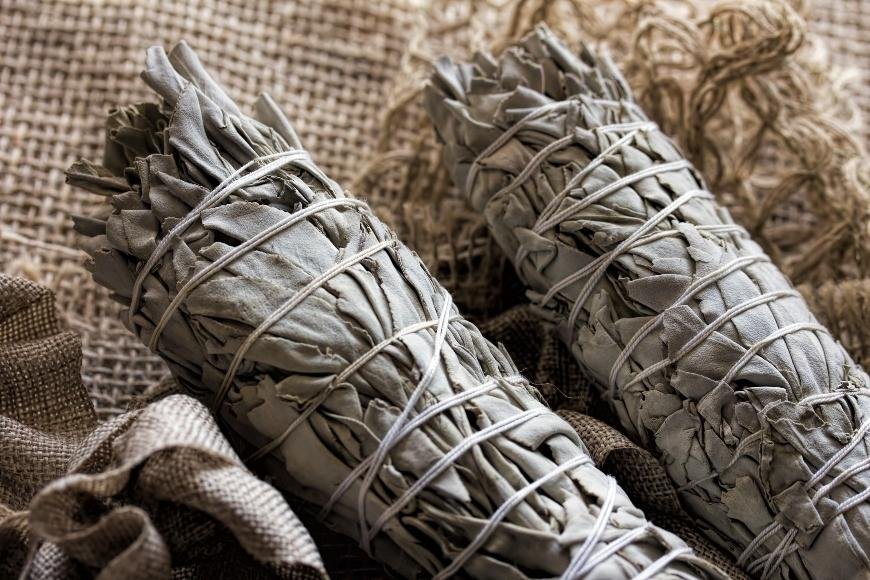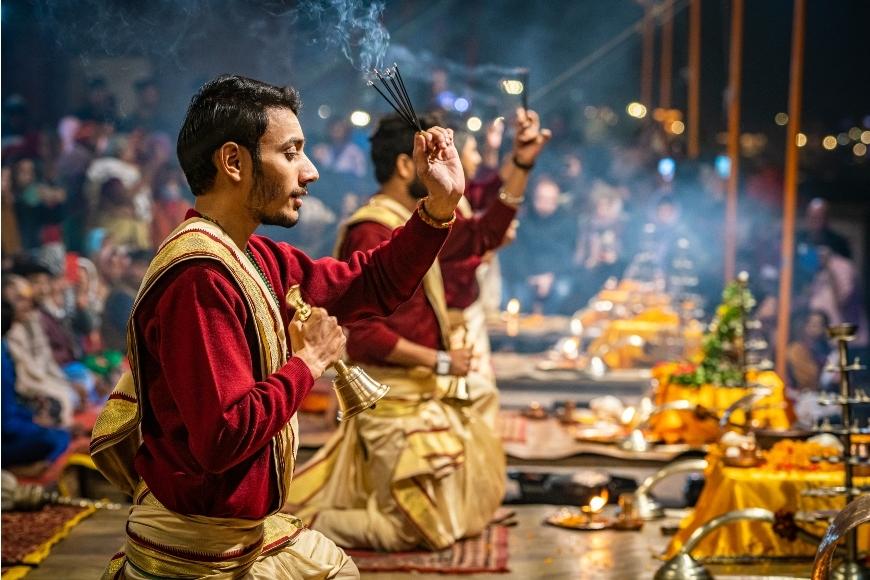How to Make Herbal Incense
Discover how to make herbal incense with our beginner-friendly guide, covering herb selection, mixing, and crafting aromatic sticks.

Learning how to make herbal incense is a creative process that can boost your creativity and provide a calming atmosphere in your home. The straightforward process involves selecting popular herbs, employing herbal oils, and crafting with natural herbal resins.
In this guide, you'll learn the basics of making incense sticks using dried herbs from woody plants or multiple other sources. You will also understand how to avoid creating poor quality incense sticks that simply emit smoke without any pleasant aroma.
We'll cover everything from gathering supplies to preparing herbs, mixing ingredients, heating and stirring the mixture until it forms finely shaped sticks with a nice aroma. Plus, we’ll discuss how to cool and store them properly for maintaining freshness.
You'll find out about the ritualistic practices associated with burning incense as well as safety precautions needed when handling these materials. So let's dive into learning more about making herbal incense!
Table of Contents:
- Gather Your Supplies
- Prepare Your Herbs
- Mix Ingredients
- Heat and Stir
- Cool and Store
- Using Herbal Incense Safely
- Troubleshooting Tips
- FAQs in Relation to How to Make Herbal Incense
- Conclusion
Gather Your Supplies
Before beginning your herbal incense project, be sure to have all the required components on hand for an easier and more successful endeavor. This will make the process smoother and more efficient. Here's what you'll need:
- Dried herbs: Pick your favorite aromatic herbs like lavender, sage, or rosemary.
- A mortar and pestle for grinding the dried herbs.
- An essential oil that complements your chosen herb(s).
- Makko powder: A natural binder made from tree bark.
- A mixing bowl and spoon.
You can find these items at local health stores or online platforms. Remember, quality is key when selecting these ingredients - especially with the dried herbs and essential oils. High-quality components will result in a more potent and long-lasting scent for your homemade incense.

If you're new to this craft, don't worry. For those just starting out, numerous online guides are available to assist with the process.
Set Up Your Workspace
Aside from gathering your supplies, make sure you have a clean workspace where you can spread out your materials without interruption. Making incense is an art form that requires patience and precision - so take your time during this initial setup phase.
Get Creative
Once you have all the materials necessary, it's time to explore your creative side and begin crafting your own unique scents. Experiment with different herbs and essential oils to create unique scents that suit your preferences. Making your own herbal incense is not only fun, but it's also a great way to relax and unwind.
Final Thoughts
Remember, making herbal incense is a process that requires attention to detail and patience. But with the right supplies and a little creativity, you can create your own unique scents that will fill your home with a delightful aroma.
Prepare Your Herbs
Before making herbal incense, you need to prepare your herbs. Opt for fresh herbs, such as lavender, sage, rosemary or cannabis if you desire a stronger aroma.
- To dry them out, hang them upside down in a warm room with good air circulation until they crumble when touched.
- Grind your herbs to a fine consistency using a herb grinder, mortar and pestle, or electric coffee grinder. Mixing different herbs can create unique scent profiles. For example, combining lavender for relaxation with rosemary for mental clarity can create a calming yet focused atmosphere.
Mix Ingredients
Time to blend the components together now that you've got your herbs prepped.
- Start by choosing a base for your herbal incense. Choose a base for your herbal incense such as sandalwood or frankincense resin, which have calming properties.
- Next, add in your chosen herbs. The exact quantities will depend on the strength of scent you want to achieve and the specific herbs you're using. As a general rule though, try not to let any one herb dominate the mixture too much.
- You'll also need some sort of binder to hold everything together - honey is a popular choice due its natural stickiness and sweet aroma.
- To mix everything together properly, start by grinding up your base ingredient into a fine powder (if it isn't already). Then gradually add in each herb one at a time while continuing to grind until all ingredients are well combined.
- If you're using honey as a binder, warm it slightly so that it becomes runny before stirring into the mixture. Be careful not to overheat as this can cause some of the more delicate aromas in your blend to evaporate off prematurely.
Remember: patience is key when making herbal incense - rushing things can result in an unevenly mixed product with inconsistent scents throughout.
Heat and Stir
Heating and stirring your herbal incense mixture is a crucial step in achieving the perfect aroma. The key is to apply gentle heat to release essential oils without burning your herbs.
- Gently heat the blended ingredients in a non-stick pan on low to get the ideal smell. Keep an eye on it at all times to avoid burning any part of your mixture. Stir frequently to distribute heat evenly and ensure each herb releases its oil uniformly. A wooden spoon or spatula works best for this task.
- If you notice any smoking or scorching, remove your pan from the burner immediately and allow it to cool down before resuming with lower heat. Patience is crucial when making herbal incense; rushing can lead to subpar results.
The duration of this process depends on the herbs used in your blend, but most blends require between 10-20 minutes under low heat while being stirred constantly.
Cool and Store
Once the herbal incense sticks has been heated and blended, it's essential to remove from heat and let cool for preservation. This step is crucial for the longevity of your homemade incense. Take the mix away from the heat source and let it sit without disturbance until completely cooled off.
Allow the mixture to cool for several hours or overnight, depending on its size. Patience is key here; rushing this step could result in improperly cured incense that doesn't burn correctly.
After cooling, store your herbal incense properly to maintain its potency and aroma over time. Use an airtight glass jar, as plastic containers may leach chemicals into the mix over time, altering its quality.
Proper Storage Tips
- Keep the jar in a cool, dark place away from direct sunlight which can degrade some herbs' active compounds.
- Avoid storing near strong odors as these can seep into your blend and alter its scent profile.
- Label each jar with contents and date made so you know exactly what's inside.
In addition to proper storage, consider using fresh ingredients whenever possible you make incense for optimal results. Dried herbs are fine but remember they may have lost some potency while fresh ones haven't had any chance yet at degradation.

Using Herbal Incense Safely
Ensuring your environment is enhanced with herbal incense can be a great way to create the desired atmosphere, yet it's essential to do so in a secure manner. Remember that incense can have a profound impact on your mood and overall health.
Quality Ingredients
Always use high-quality ingredients in your mix. Poor-quality herbs or additives may produce harmful smoke when inhaled. It's best to source organic herbs from trusted suppliers.
Ventilation
Ensure adequate airflow wherever you burn your incense. Enclosed areas can be overwhelmed with the delightful scent of incense, yet too much smoke in such spaces is not beneficial for anyone.
Fire Safety
Keep flammable materials away from lit incense sticks or cones. Also, keep pets and children out of reach. Never leave burning incense unattended and extinguish them fully after use. A simple ceramic dish filled with sand makes a safe holder where sticks can be inserted upright while cones sit flat on top.
Start Slow
If you're new to burning incense, start slow. Light a small amount and see how it affects you before increasing the quantity burned at any one time.
Remember, safety should always come first when enjoying herbal aromas.
Troubleshooting Tips
Creating your own herbal incense can be a rewarding process, but it's not without its challenges. Here are some tips to help you troubleshoot any issues that may arise during the incense-making process.
Inconsistent Burn
If your incense is burning unevenly or going out frequently, it could be due to the herbs not being properly dried. Ensure all ingredients are completely dry before use; this will allow for a more consistent burn.
Lack of Scent
One common issue is that the finished product lacks the desired scent intensity. This could be because you're using too few aromatic herbs in your mixture. Attempt to vary the blend of herbs, or up the dosage until you get your desired scent.
Mixture Clumping Together
If your mixture clumps together during storage, it may have been exposed to moisture. Store the incense in a container that seals securely, away from humidity and light.
Irritation When Burning
Sometimes burning homemade incense can cause irritation like coughing or sneezing. If this happens, consider reducing the amount of smoke-producing ingredients in your recipe such as resinous woods and barks.
Remember, making herbal incense is an art form - don't get discouraged if things don't go perfectly at first. With practice and patience, anyone can master it.
FAQs in Relation to How to Make Herbal Incense
How to Make Herb Incense
Gather supplies, prepare herbs, mix ingredients, heat and stir the mixture, then allow it to cool before storing.
Best Herbs for Incense
Lavender, sage, rosemary, and cedarwood are excellent choices for making herbal incense due to their strong aromatic properties.
Supplies Needed for Incense Making
Dried herbs or resins of choice, a binding agent like gum arabic powder or makko powder, and charcoal disks.
Traditional Incense Making
Raw materials such as barks, seeds, or resin are ground into a fine powder, then rolled onto bamboo sticks or formed into cones.
Benefits of Burning Incense
Burning incense can help reduce stress, improve sleep, and purify the air.
How to Burn Incense Safely
Burn incense in a well-ventilated area, away from flammable objects, and never leave it unattended.
Conclusion
How to Make Herbal Incense: Looking for a new way to enjoy your herbs? Try making your own herbal incense with this easy DIY guide. Create custom blends that fill your space with pleasant aromas and suit your unique tastes. Remember to use caution when burning incense and never leave it unattended. Follow our tips on how to use it safely and refer to our troubleshooting section for helpful solutions.





















































































































